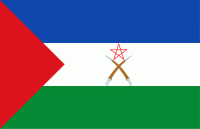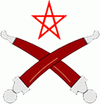Afar Region (Afar Region)
 |
 |
The Afar Triangle, the northern part of which is the Danakil Depression, is part of the Great Rift Valley of Ethiopia, and is located in the north of the region. It has the lowest point in Ethiopia and one of the lowest in Africa. The southern part of the region consists of the valley of the Awash River, which empties into a string of lakes along the Ethiopian–Djibouti border. Other notable landmarks include the Awash National Park.
Based on the 2017 projections by the Central Statistical Agency of Ethiopia (CSA), the Afar Regional State has a population of 1,812,002, consisting of 991,000 men and 821,002 women; urban inhabitants number 346,000 of the population, a further 1,466,000 were pastoralists.
Based on the 2007 Census conducted by the Central Statistical Agency of Ethiopia (CSA), the Afar Regional State has a population of 1,390,273, consisting of 775,117 men and 615,156 women; urban inhabitants number 185,135 or 13.32% of the population, a further 409,123 or 29.43% were pastoralists. With an estimated area of 96,707 square kilometers, this region has an estimated density of 14.38 people per square kilometer. For the entire region 247,255 households were counted, which results in an average for the Region of 5.6 persons to a household, with urban households having on average 4 and rural households 6 people.
Afar is predominantly (89.96%) spoken in the region and is the working language of the state. Other languages with a significant number of speakers in the state include Amharic (6.83%), Tigrinnya (1.06%), Argobba (0.79%), Wolaitta (0.43%), and Oromifa (0.4%).
According to the CSA,, 48.57% of the total population had access to safe drinking water, of whom 26.89% were rural inhabitants and 78.11% were urban. Values for other reported common indicators of the standard of living for the Afar Regional State include the following: 67.3% of the inhabitants fall into the lowest wealth quintile; adult literacy for men is 27% and for women 15.6%; and the regional infant mortality rate is 61 infant deaths per 1,000 live births, which is less than the nationwide average of 77; at least half of these deaths occurred in the infants’ first month of life. On 20 April 2007, the regional government announced that it had increased health coverage from 34% to 40%, the result of construction of 64 new health clinics, increasing the total for the region to 111.
Map - Afar Region (Afar Region)
Map
Country - Ethiopia
 |
 |
| Flag of Ethiopia | |
Anatomically modern humans emerged from modern-day Ethiopia and set out to the Near East and elsewhere in the Middle Paleolithic period. Southwestern Ethiopia has been proposed as a possible homeland of the Afroasiatic language family. In 980 BCE, the Kingdom of D'mt extended its realm over Eritrea and the northern region of Ethiopia, while the Kingdom of Aksum maintained a unified civilization in the region for 900 years. Christianity was embraced by the kingdom in 330, and Islam arrived by the first Hijra in 615. After the collapse of Aksum in 960, a variety of kingdoms, largely tribal confederations, existed in the land of Ethiopia. The Zagwe dynasty ruled the north-central parts until being overthrown by Yekuno Amlak in 1270, inaugurating the Ethiopian Empire and the Solomonic dynasty, claimed descent from the biblical Solomon and Queen of Sheba under their son Menelik I. By the 14th century, the empire grew in prestige through territorial expansion and fighting against adjacent territories; most notably, the Ethiopian–Adal War (1529–1543) contributed to fragmentation of the empire, which ultimately fell under a decentralization known as Zemene Mesafint in the mid-18th century. Emperor Tewodros II ended Zemene Mesafint at the beginning of his reign in 1855, marking the reunification and modernization of Ethiopia.
Currency / Language
| ISO | Currency | Symbol | Significant figures |
|---|---|---|---|
| ETB | Ethiopian birr | Br | 2 |
| ISO | Language |
|---|---|
| AM | Amharic language |
| EN | English language |
| OM | Oromo language |
| SO | Somali language |
| TI | Tigrinya language |















